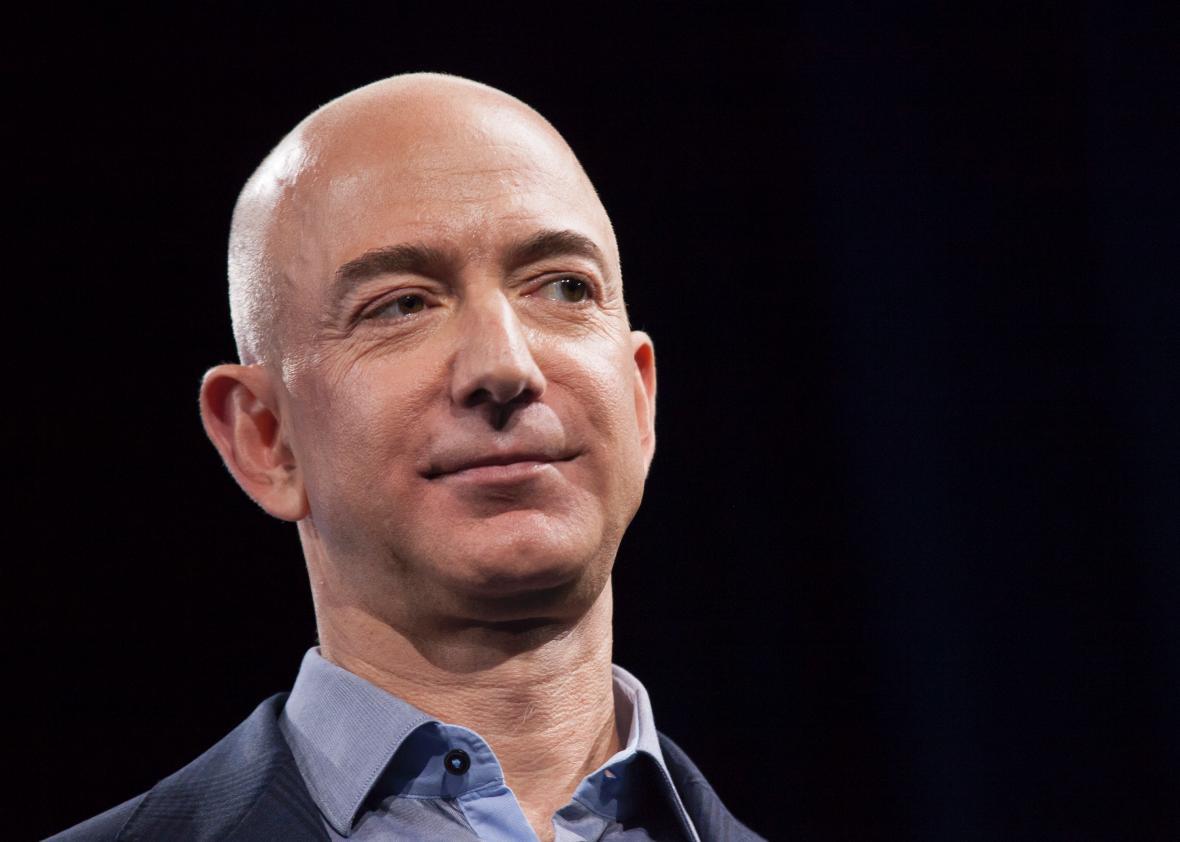Two months after the New York Times published a dramatic, lengthy exposé of Amazon’s “bruising workplace” for white-collar workers, the company has issued a stinging rebuttal. The pushback comes via a post on Medium, “What the New York Times Didn’t Tell You,” from Jay Carney, the former Obama administration press secretary and current senior vice president of global corporate affairs at Amazon. To briefly recap, the original Times story from reporters Jodi Kantor and David Streitfeld was based on interviews with more than 100 current and former Amazon employees. The piece was starkly negative, portraying Amazon as a place that pushes its white-collar workers to their limits and unceremoniously dispatches those who can’t keep up. The story was peppered with shocking quotes, like this one from former book marketer Bo Olson: “Nearly every person I worked with, I saw cry at their desk.”
Carney, it turns out, has his own bombshell to drop:
Here’s what the story didn’t tell you about Mr. Olson: his brief tenure at Amazon ended after an investigation revealed he had attempted to defraud vendors and conceal it by falsifying business records. When confronted with the evidence, he admitted it and resigned immediately.
Amazon’s other gripes with the Times story include how the reporting was handled. Carney claims that throughout the company’s interactions with Kantor, “we were repeatedly assured that this would be a nuanced story that dove into what makes Amazon an exciting and fun place to be, not just a demanding place to work.” As evidence of this, Carney offers up the following excerpt from an email Kantor sent to Amazon’s VP of public relations, Craig Berman, in May:
While we were talking, I also realized that you were envisioning a story that is basically a stack of negative anecdotes from ex-Amazonians. But if we were using that story form, we’d just come to you for responses and be done. As I said, this article is more of an inquiry into the nature of work, which is why we’re trying to get you to share your point of view as well as positive material — to get anecdotes and quotes from you into the story that says “here’s why we do things this way, here’s what we’ve learned, here’s what works for us.” This isn’t a trick to get you to share material that we can easily undercut — we find it genuinely compelling.
When the Times story first published, we wondered in Slate whether working at the company was really as awful at the article made it out to be. The anecdotes the Times had collected were undoubtedly horrifying—stories of women who felt forced out for having children, or who had their jobs essentially put on notice during personal health crises—and the 100-plus interview count undoubtedly impressive. But at a company that currently employs more than 150,000 people and has previously employed many more, 100 people is a vanishingly small percentage. The Times also glossed over certain crucial details. Did the “steady exodus” described in the piece occur among white-collar workers exclusively, or did it also account for churn in Amazon’s warehouse jobs, which are notorious for their poor conditions and high attrition, not to mention subject to standard seasonal turnover. On top of that, consider the sad reality that you could probably produce a similar collection of awful anecdotes from embedding in many a Big Company.
So who’s right? It seems safe to assume that Carney’s retelling makes selective omissions. For example, he notes that two of the named Times sources who described being shredded in evaluations had also received positive commentary, such as, “It has been a pleasure working with Elizabeth.” Those two things aren’t necessarily mutually exclusive—a harsh performance review can be the perfect place for a cold, blandly positive statement. Carney also doesn’t deny many of the more specific and disturbing allegations made by sources. In his own post on Medium, which has apparently become the go-to, er, medium for reporters and their disgruntled subjects to quibble over the particulars, New York Times executive editor Dean Baquet is already disputing many of Carney’s assertions. Olson in particular, Baquet reports, told the paper Monday that “he was never confronted with allegations of personally fraudulent conduct or falsifying records, nor did he admit to that.”
What’s most striking about this entire exchange is Amazon’s willingness to dredge the story up two months later. As Businessweek writer Ashley Vance points out on Twitter, it’s an unusual strategy for any company, and it makes you think the Times story must have really hit Amazon where it hurts. With its roughly $270 billion market cap, scores of devoted Prime customers, and massive online presence, Amazon might seem invulnerable to bad press. But in the tech industry, where the talent wars are never-ending, becoming known as the workplace from hell can be a recruiting death blow. This was something that Amazon CEO Jeff Bezos himself pointed out when he penned a response to the Times story back in August. “I don’t think any company adopting the approach portrayed could survive, much less thrive, in today’s highly competitive tech market,” Bezos wrote. So why push back more forcefully now? It could be that Amazon fears that if it doesn’t do more to dispel the impressions created by the Times story, its standing in that competitive market could get a lot shakier.
